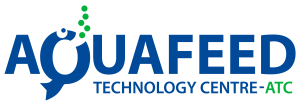New research centre will contribute to more environmentally friendly fish feed

The Minister of Fisheries and Seafood in Norway, Odd Emil Ingebrigtsen, cut the ribbon when the Aquafeed Technology Centre was opened on Wednesday last week in the Norwegian city of Bergen. Researchers and the industry will now work together towards a more environmentally friendly fish feed.
More than 70 percent of the greenhouse gas emissions produced by the salmon we eat comes from fish feed. Every year, the Norwegian salmon industry uses 1.6 million tons of feed and 90 percent of the raw materials are imported. The industry is calling for more environmentally friendly feed, and this will be one of the main tasks for the research centre in Bergen, Norway.
In 2015, Nofima, the University of Bergen (UiB) and Norce received funding from the Research Council of Norway regarding an application for infrastructure funding. The infrastructure is now pretty much complete and a total of NOK 33.9 million (app. 3.2 million €) has been spent. NOK 32.8 million has been granted by the Research Council of Norway.
“Today, researchers and the industry have received the instruments they need to develop the feed of the future”, says Odd Emil Ingebrigtsen before cutting the ribbon.
The minister made it clear that the work conducted at the centre has been based on open research. This means that all industry actors will have access to the results and therefore the pace of innovation can be increased.
Open international research
“This world-class centre is the result of targeted investment over many years. The centre will be made accessible to researchers from all countries. Open research forms its foundation. Access to this type of state-of-the-art research infrastructure also makes Norwegian research communities attractive partners for leading international research communities”, Ingebrigtsen said in his opening speech.
“The aquaculture industry is completely dependent on access to more feed containing sustainable raw materials”, Ingebrigtsen said. There are many initiatives, and several raw materials are being discussed that originate from, for example, krill, bacteria, mesopelagic species, tunicates, microalgae, kelp species, grasshoppers and soldier fly larvae.
Research Director Mari Moren at Nofima is pleased with all the initiatives, but is clear in her message:
“It is not as simple as just removing soy and then adding a new raw material. Firstly, research must be conducted on the suitability of raw materials in the feed pellet, because feed production is rather complex. We have to start in the right place. Sustainable raw materials must first be processed in the correct manner before they can be used in salmon feed. Once this is in place, suppliers can start large-scale production of these.”
The main section of the Aquafeed Technology Centre (ATC) is located on Nofima’s premises in Bergen. This is state-of-the-art equipment.
“This centre provides us with a complete infrastructure that benefits both research and trade and industry”, says Øyvind Fylling-Jensen, CEO of Nofima.
See film from the opening and the scientific seminar that followed:
PS: In Norwegian language only.
Fagseminar og offisiell åpning av Aquafeed Technology Centre i Bergen 11. august 2021 from Nofima on Vimeo.

